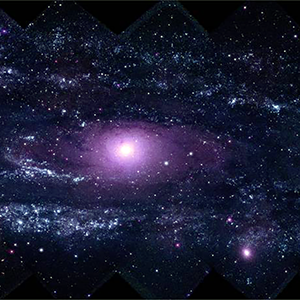Due to the lapse in federal government funding, NASA is not updating this website. We sincerely regret this inconvenience.

The UV Science and Technology Interest Group will work with the Cosmic Origins Program Analysis Group to collect community input and define long-term Cosmic Origins science objectives of the UV astronomy community that can be addressed by space-based observations. A primary goal for the STIG will be to identify a compelling suite of science cases to provide programmatic focal points that would justify the community to support investment in next-generation UV missions. UV STIG is open to any interested members of the community and we welcome all input.
Subscribe to the
UV STIG News and Announcements Email List